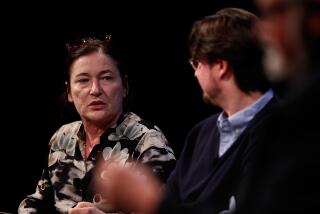‘La Folie Baudelaire’s’ scandalous subject
La Folie Baudelaire
By Roberto Calasso
Translated from the Italian by Alastair McEwen
Farrar Straus and Giroux: 339 pp., $35
Charles Baudelaire is more scandalous today than he was more than 150 years ago. Then, he was an obscure poet with one partly suppressed book, “Flowers of Evil”; an art critic when there didn’t seem to be any major artists; and the translator-promoter of a marginal foreign writer named Edgar Allan Poe. Today, the scandal is evident in sentences such as this one from “Paris Spleen”: “One should always be drunk…. Drunk with what? With wine, with poetry, or with virtue as you please. But get drunk.”
And now there is yet further proof in “La Folie Baudelaire,” the latest book from Roberto Calasso, the most inquisitively suggestive literary critic in the world today, who established this commanding position with “The Marriage of Cadmus and Harmony,” “The Ruin of Kasch” and, most recently, “Tiepolo Pink.”
“The La Folie Baudelaire” is no narrow study of the poet’s work or, even worse, a birth-to-death biography. Rather, by associating the poet with the prominent writers and artists with whom he came into contact, Calasso has created what he calls “analogical history … an ever-more-urgent desideratum in an intellectually debilitated epoch such as the present.” A questioning assault upon the received wisdom, it exposes the hollow triumph of Impressionism and its artists, Renoir, Manet, Monet and Degas, over an implacable academy.
Calasso anchors much upon Baudelaire’s prose work “The Painter of Modern Life,” marking it as the single most important article on art ever written for its suggestiveness and courage, even though it is not centered on the legendary artists one would expect to find — Renoir et al. — but rather an artist named Constantin Guys: “an unknown, devoid of an academic protection, a reporter of images who could not bear to see his name in print.”
All the well-known artists and writers of the “brothel museum” are here in “La Folie Baudelaire”: Ingres, Delacroix, Manet, Mallarmé, Flaubert, even the maybe too familiar Degas of the nudes appear. But their work, their actual claim upon our attention is always seen from an inquisitorial point of view rather than a podium.
Calasso is not interested in explanations — he has become tired of having things explained to him, exquisitely displayed in the allusive implications of Calasso’s description of an early historical painting (“Medieval War Scene”) by Degas: “These women are things that can be disposed of. We don’t know why, and no justification is required. There is no trace of war’s fury. The air is frozen, motionless. No one will witness this; no one will ask why. What is being experienced here is a new way of killing for which a certain calm is necessary. The victims form a group but not yet a mass — and they can make no appeal for help, in the silence of the countryside. An image that is like a new kind of subject for meditation. We do not know if the horsemen are soldiers, criminals or executioners.”
With this and many similar descriptive interrogations, the deeper purpose of Calasso’s project can be glimpsed: a subtle inquiry into how the 19th century, and the popular description of it as a century of startling liberatory artistic promise and vast industrial progress, could give birth to a next century defined by Auschwitz, the gulag and Hiroshima.
McGonigle is the author of “The Corpse Dream of N. Petkov,” “Going to Patchogue” and the forthcoming “St. Patrick’s Day, Dublin 1974.”
More to Read
Sign up for our Book Club newsletter
Get the latest news, events and more from the Los Angeles Times Book Club, and help us get L.A. reading and talking.
You may occasionally receive promotional content from the Los Angeles Times.






